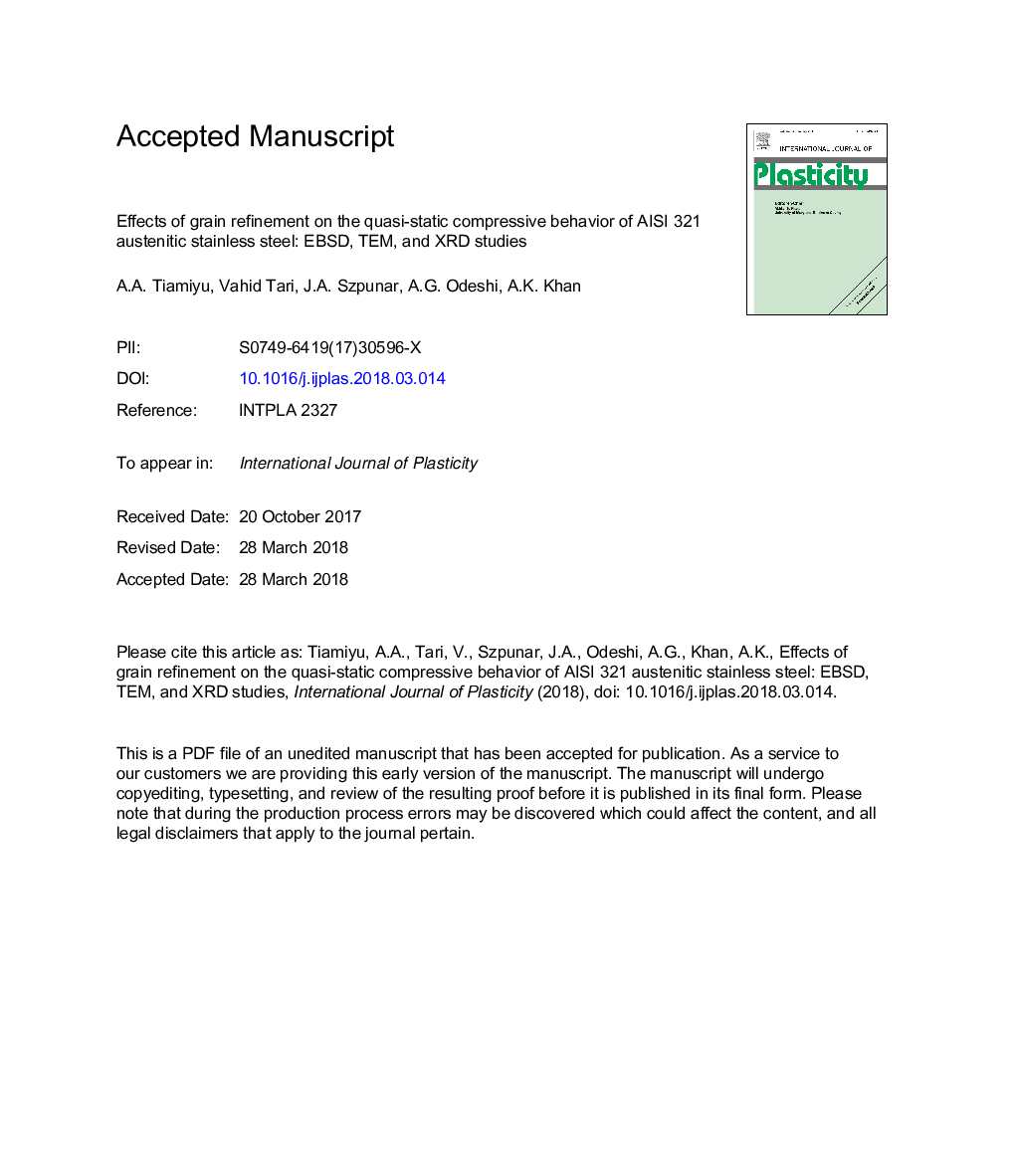| Article ID | Journal | Published Year | Pages | File Type |
|---|---|---|---|---|
| 7174788 | International Journal of Plasticity | 2018 | 42 Pages |
Abstract
The effects of grain refinement on the quasi-static compressive behavior of AISI 321 austenitic stainless steel (ASS) were studied. The effect of strain on the final microstructure after compressive deformation was also investigated. The compression tests on steel specimens were conducted at a strain rate of 4.2â¯Ãâ¯10â3 sâ1. Ultrafine-grained (UFG) specimen with the grain size of 0.24â¯Î¼m exhibits an excellent combination of high yield strength (â¼1â¯GPa) and good strain hardenability. Meanwhile, the coarse-grained (CG) specimen with the grain size of 37â¯Î¼m exhibits yield strength of â¼0.2â¯GPa. At 0.53 true strain, UFG and CG specimens exhibit compressive strengths of 5.95 and 4.80â¯GPa, respectively. The Hall-Petch relation constants, Ïo, and K, for the AISI 321 ASS were estimated to be 128â¯MPa and 478â¯MPaâ¯Î¼mâ0.5, respectively. The strain hardening behavior of both UFG and CG specimens occur in three distinctive stages. CG specimen exhibits higher strain hardening rate than the UFG specimen up to a critical true strain of 0.4, above which strain hardening rate in UFG becomes greater. X-ray diffraction (XRD), electron backscatter diffraction (EBSD) and transmission electron microscope (TEM) techniques were used for microstructural analyses to understand the underlying mechanisms behind the strain hardening behavior. Texture evolution during deformation, orientation relationship between phases and the sequence of martensitic phase transformation were also studied and are discussed in this paper. Visco-plastic self-consistent (VPSC) modeling was employed to decipher the role of deformation mechanisms in macroscopic stress-strain response and also in texture evolution during uniaxial compression loading.
Keywords
Related Topics
Physical Sciences and Engineering
Engineering
Mechanical Engineering
Authors
A.A. Tiamiyu, Vahid Tari, J.A. Szpunar, A.G. Odeshi, A.K. Khan,
